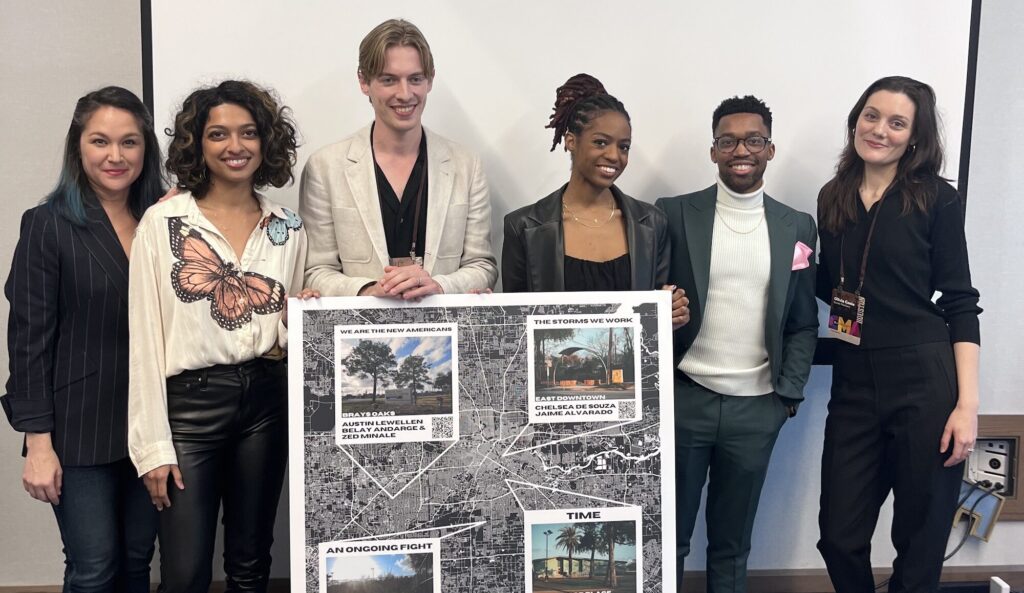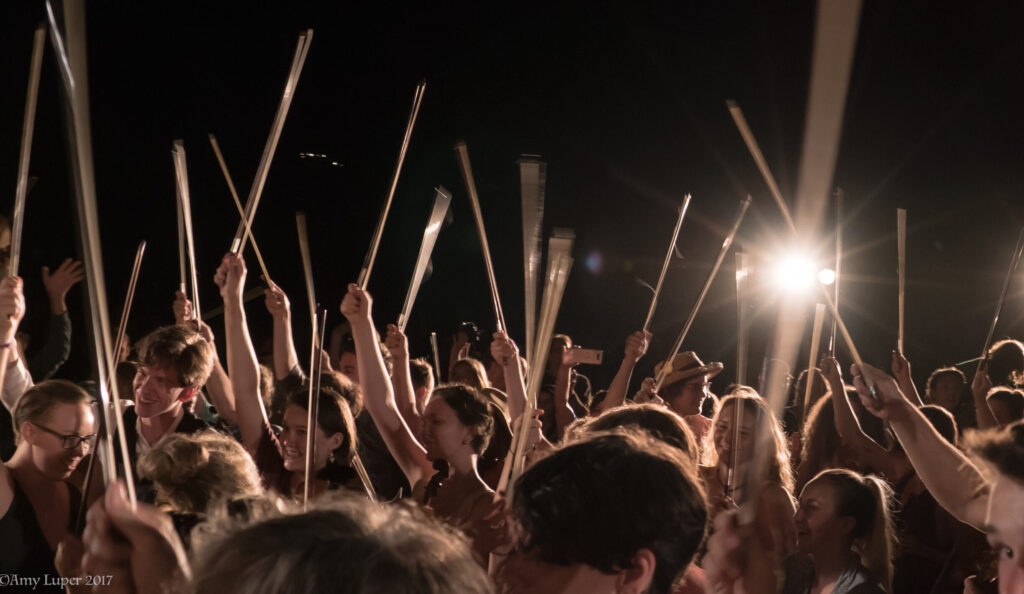A Repertoire to Call Your Own
Listening closely to innovative composers, neighborhood streets, and pasta boxes, the young composers of Casita Maria's Sound Journeys program found their voices.

“SIRENS!”
“Yes, sirens.”
“The sound of an ice cream truck!”
“The sound of my neighbors; they’re loud.”
Twelve young musicians in the class had written down the sounds of their neighborhoods, which Liz Hogg and Araceli Poma, both teaching artists, encouraged them to share out loud with the class. Heads nodded and hands quickly rose in the air to declare favorites. These fifth graders realized that they had heard a great many sounds, and they seemed surprised and pleased that others in the class had heard similar ones.
Shared moments of self-discovery were at the heart of Sound Journeys, a six-week curriculum designed for fifth graders at Casita Maria Center for Arts & Education in the Bronx, to celebrate the diverse aspects of chamber music created by contemporary composers of color. Each week’s lesson centered around a musical concept, such as harmony, and a complementary socio-emotional skill, like collaboration, and a composer whose work exemplifies the concept and skill, such as Nathalie Joachim, a Haitian-American vocalist, flutist, and composer.
The Casita Maria Center, which celebrated its 90th anniversary this year, proudly stands among the first charitable organizations to serve Latinos in New York City. This milestone underscores the organization’s deep commitment to its Bronx community, which is expressed through a varied array of offerings, including college prep classes, music festivals, and afterschool programs. The organization’s dedication to nurturing young people as active community members is clear in all aspects of their work. At Casita Maria, you won’t hear the words “students” or “kids.” Instead, young people are recognized by their roles in activities, such as “young musicians” or “young artists.”
In late 2023, as we set out to design a music curriculum from scratch for these young musicians, we were keenly aware of the limitations of the traditional approaches to music education that we had experienced ourselves. Often, students are given instructions and guidelines without much room for personal creativity or exploration. We aimed for a curriculum that empowered young people to be not only players and listeners but also creators and composers, and we decided to use living composers of color as examples of musical excellence. Students learned about improvisation through the dynamism of Curtis Stewart’s music; about melody and accompaniment through the compositions of Rhiannon Giddens, which are deeply rooted in folk traditions; and about musical texture from Jessie Montgomery’s intricately woven string quartet Strum. By highlighting living composers who reflect these students’ identities, we aimed to show that musical excellence is not a distant, historical concept but rather something each student can find in their own communities today, and a quality they may already possess within themselves.
The vocal quartet säje proved to be one class favorite. As we soaked in the nuances of these singers’ vocal interactions and the immersive sounds of their song “(You Are) The Oracle,” these typically energetic fifth graders sat quietly, absorbing more than reacting. And as the six weeks progressed, students paired up to work on their own compositions, recording on Soundtrap, an online digital audio workstation, and using percussion instruments, found objects (pasta boxes, Tupperware containers filled with rice, shells, and anything else they wanted to bring in), as well as their own voices.

“Angelo, what if you bring the pasta box and shake it closer to the mic?” said his classmate, Isaiah. Angelo shook his head. “No. It’ll be too loud; it’s already covering the drum track.” Isaiah considered that comment: “Ok, let’s record it again, and maybe I’ll play the djembe a little louder this time.”
The idea of turning pasta boxes into musical instruments or, say, considering the nuances of siren sounds in the street before any formal discussions about rhythm and pitch, may seem like a departure from traditional notions of composition, music education, or musical excellence. These considerations might be beside the point. But maybe not. Growing up, our own music educations were highly structured and directive, focusing intensely on precision, often at the expense of our natural creativity. While some might say that approach was successful—after all, we both became professional musicians—it also left us questioning our true connection to music. We both have had many years of rigorous musical training but, until a few years ago, we shared a common suspicion that we weren’t really creative beings. This motivated us to find ways for others to embrace their own creativity, and to foster personal and imaginative engagement with music and the arts.
We were led to our current careers in education and music psychotherapy, where we use the arts to facilitate personal growth and community connection. We teamed up to lead creative placemaking projects, like sound art pop-ups at museum Family Days, music and literacy classes, and music and health initiatives. Collaborating with organizations on these projects eventually inspired us to co-found Sounds That Carry, a creative impact consultancy dedicated to assisting organizations in leveraging the arts as a catalyst for social change. The goal of every project we facilitate is simple: For each person to come away knowing they are creative. Also, we believe that embracing all the challenges and joys of working with others through the process of creating music is one of the best ways for people of any age to learn about themselves.
After the six-week program at Casita Maria, the young musicians presented their compositions for an audience of friends, peers, teachers, family members, and staff. Their ownership was clear, albeit shy and giggly, as they introduced their pieces—sharing both the titles and the instruments they used. For many, this was the first time they had personally introduced something they could call their own. One duo branded themselves as “Leandre & Cassius Productions” as they approached the mic. Another duo exclaimed, “Cover your ears!” before hitting play on their MacBook Pro: Their song kicked off with one student’s belted out a cappella performance, followed by thunderous djembe beats.
We called this curriculum Sound Journeys because it is meant to mark an important passage for each student. During those six weeks, they didn’t only learn about the music of important composers and performers; they gained the experience and confidence to call themselves musicians and composers. They also learned a little bit about how to listen to their worlds, and to find their places within them.



